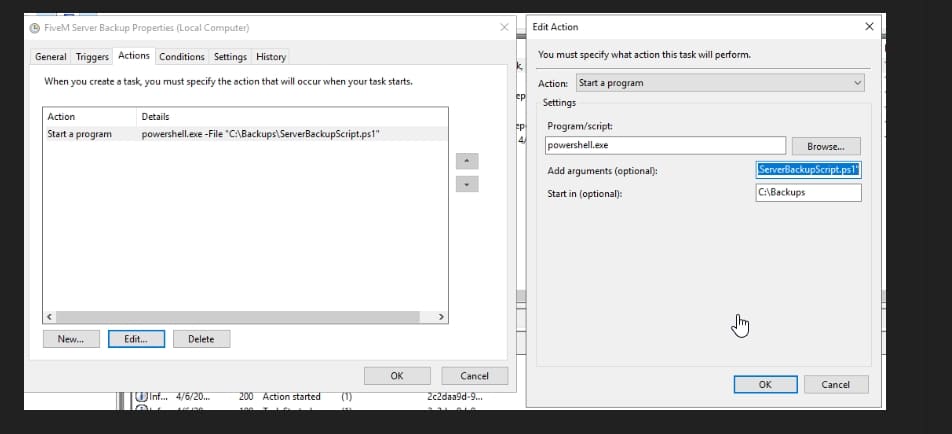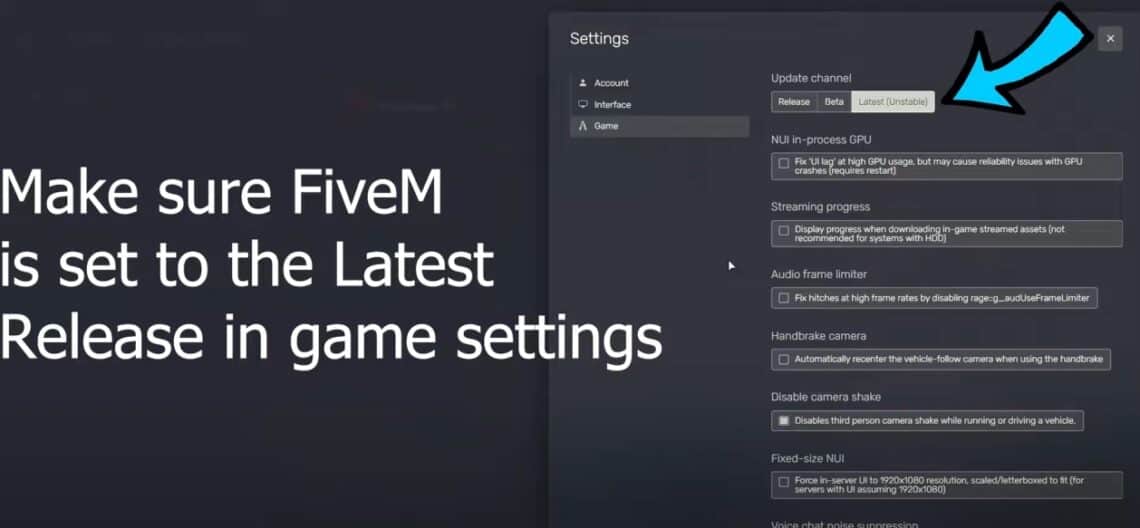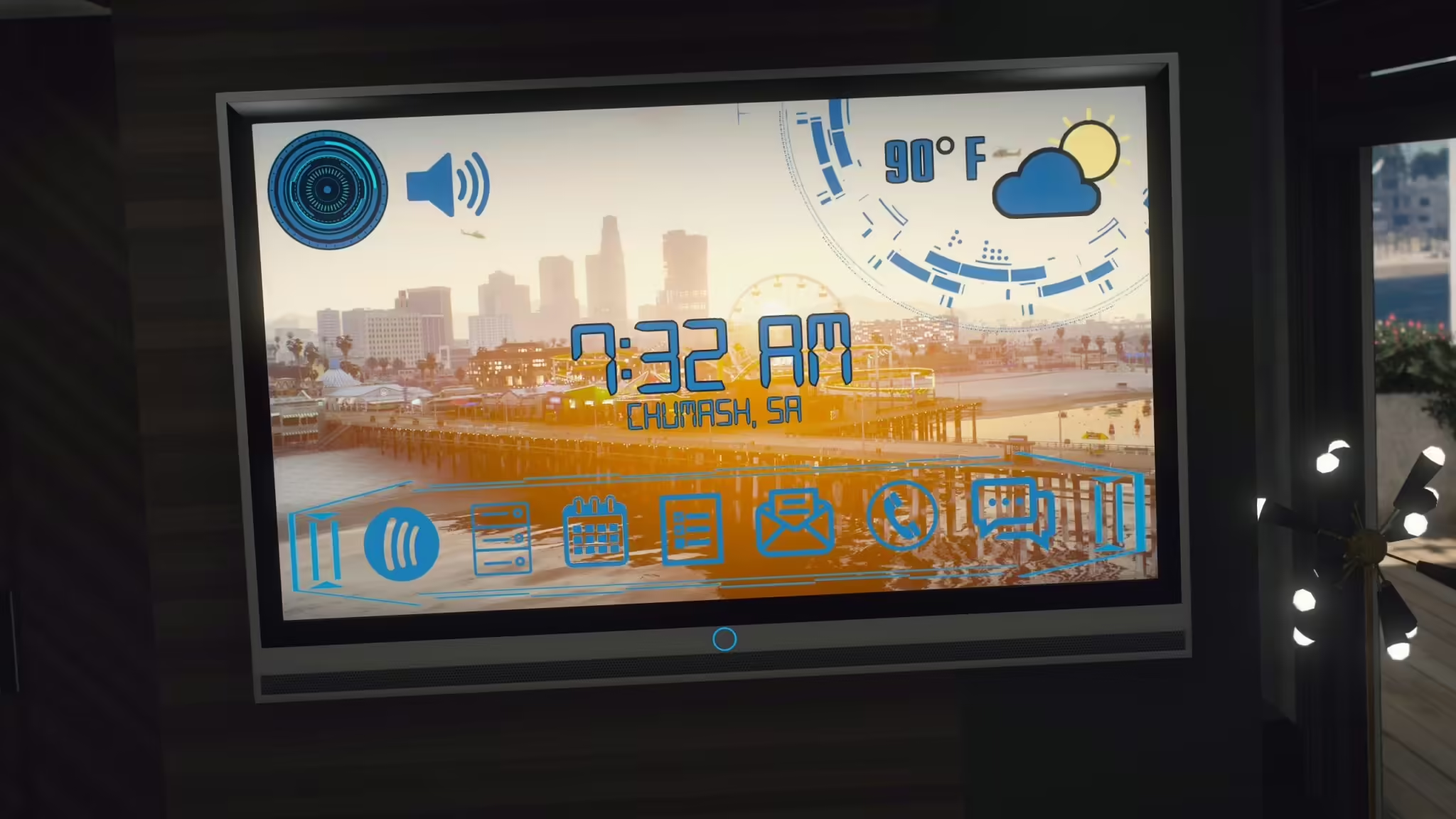If you’re running a GTA server on FiveM, you may notice some slow issues with MySQL/database or server hitch troubles…
Table des matières
Introduction
In the dynamic world of Grand Theft Auto V roleplay, FiveM servers have emerged as the backbone of an ever-growing community. These servers provide a platform for players to immerse themselves in diverse virtual lives, creating experiences that range from law enforcement simulations to intricate criminal enterprises. However, as the popularity of FiveM servers surges, so do the challenges associated with maintaining optimal performance.
Common issues like hitch warnings, server lag, and MySQL/database slowdowns can significantly hinder gameplay, leading to frustrated players and a tarnished server reputation. Server speed isn’t just a technical concern—it’s a critical component that directly impacts player retention, satisfaction, and the overall success of your server.
This comprehensive guide aims to equip you with actionable insights and practical steps to enhance your FiveM server’s performance. By the end, you’ll be well-versed in diagnosing bottlenecks, optimizing scripts, upgrading hardware, and implementing advanced techniques to ensure a smooth and engaging experience for your community.
1. Understanding FiveM Performance Issues
Common Problems
High Resource Time
In the context of FiveM, “ms” refers to the milliseconds it takes for a resource (script) to complete its tasks each tick. High resource times indicate that a script is consuming excessive processing time, which can lead to server lag. Monitoring these times is vital; ideally, scripts should run below 5ms to ensure smooth gameplay.
Hitch Warnings
A hitch warning occurs when the server’s main thread is delayed beyond a certain threshold (typically 200ms). This delay can cause noticeable lag spikes, affecting all connected players. Hitch warnings often stem from poorly optimized scripts or hardware limitations.
Database Delays
Lag can also originate from database operations. Slow queries, lack of indexing, or inefficient data handling can cause delays that ripple through the server, leading to stutters and synchronization issues.
Client-Side vs. Server-Side Lag
It’s essential to distinguish between client-side lag (issues on the player’s end) and server-side lag (issues stemming from the server). Server-side lag affects all players simultaneously, while client-side lag is isolated to individual players.
Why Performance Matters
Server performance is directly tied to player experience. Lag, hitching, and delays can break immersion, leading players to disconnect or seek other servers. High-performance servers foster a stable environment, encouraging players to stay longer and contribute positively to the community.
2. Diagnosing Performance Bottlenecks
Tools for Diagnosing Issues
FiveM Resmon
The Resource Monitor (Resmon) is an in-game tool accessible via Ctrl + Alt + Del. It provides real-time data on resource usage, showing which scripts are consuming the most processing time.
Server Logs
Enabling detailed logging in your serveur.cfg file allows you to track errors and warnings, providing insights into potential issues.
Profiling Tools
External tools like txAdmin’s profiler offer advanced diagnostics, including CPU and memory usage over time.
Database Analysis
Use MySQL/MariaDB’s slow query log to identify queries that take longer than expected. Tools like phpMyAdmin ou MySQL Workbench can help visualize and optimize these queries.
Step-by-Step Guide
- Open Resmon: In-game, press
Ctrl + Alt + Delto access Resmon. Monitor resources exceeding 5ms. - Identify Problematic Scripts: Note scripts with consistently high ms values.
- Stress Test: Increase player count during off-peak hours to observe how the server handles additional load.
- Check Server Logs: Look for repeated errors or warnings that could indicate deeper issues.
- Analyze Database Performance: Use slow query logs to identify and optimize sluggish database interactions.
3. Optimizing Your Server Scripts
Choosing Efficient Scripts
Not all scripts are created equal. Opt for scripts known for efficiency and regular updates. Community forums and resources like the Cfx.re forums can help identify high-quality scripts.
- Testing Before Deployment: Always test new scripts on a staging server to assess performance impact.
- Optimized Frameworks: Consider using frameworks like QBCore ou ESX, which are regularly updated for performance.
Removing Unnecessary Scripts
Audit your server regularly to remove outdated or unused scripts.
- Vehicle Mods and MLOs: Unused custom vehicles or MLOs (Map Loader Objects) can consume resources unnecessarily.
- Streamlined Resources: Keep only what adds value to your server’s experience.
Using Multi-Threaded Scripts
Multi-threading allows scripts to perform tasks simultaneously, improving efficiency.
- Understanding Multi-Threading: In FiveM, multi-threaded scripts can offload tasks to different threads, reducing the main thread’s load.
- Examples: Scripts like ox_inventory ou async utilize multi-threading for better performance.
4. Upgrading Your Server Hardware
Minimum Recommended Hardware
- Processeur: High single-core performance is crucial. Processors like the Intel i7/i9 ou AMD Ryzen 7/9 series are recommended.
- BÉLIER: At least 8GB, though 16GB+ is preferable for high-population servers.
- Stockage: SSDs are minimum; NVMe drives offer faster read/write speeds, reducing load times.
Hosting Solutions
On-Premise vs. Cloud Hosting
- On-Premise: Gives full control but requires maintenance and robust internet connectivity.
- Cloud Hosting: Providers like OVH, Hetzner, et Vultr offer scalable solutions with high uptime.
Best Providers for FiveM Servers
- Zap Hosting: Official FiveM partner, easy setup but can be pricier.
- OVH: Offers dedicated servers with DDoS protection.
- Hetzner: Affordable high-performance servers, ideal for European audiences.
Managing Network Latency
- Server Location: Choose a data center close to your target player base.
- Low Ping: Providers with robust network infrastructure can offer lower latency.
- DDoS Protection: Essential for maintaining uptime and performance.
5. Optimizing MySQL/Database
Database Configuration Tips
Connection Pooling
- Why It Matters: Reduces overhead by reusing database connections.
- How to Enable: Configure your database connector in the server scripts to use pooling.
Indexing Tables
- Guide to Indexing: Use indexes on columns frequently used in WHERE clauses.
- Outils: Utiliser phpMyAdmin ou MySQL Workbench to add indexes.
Reducing Query Load
- Optimize Queries: Avoid SELECT *; specify only needed columns.
- Batch Operations: Combine multiple queries when possible.
Caching
Using Redis
- Benefits: Stores frequently accessed data in memory, reducing database load.
- Setup Steps:
- Install Redis on your server.
- Configure your framework (QBCore/ESX) to use Redis.
- Modify scripts to utilize caching where applicable.
6. Configuring Your Server for Performance
FiveM Configuration File (serveur.cfg)
- Gestion des ressources: Limit the resources started to only what’s necessary.
- Thread Priorities: Adjust
sv_threadedConsoleetsv_prioritysettings for optimal performance. - Tick Rates: Higher tick rates can improve responsiveness but at the cost of higher CPU usage.
Limiting Slots
- Why It Helps: Fewer players reduce the load on server resources.
- Balanced Approach: Find a sweet spot that balances community size and performance.
Disabling Unused Features
- OneSync: If not needed, disabling can save resources.
- AI Density: Lowering
pedetvehicledensity reduces CPU load.
7. Reducing Resource and Asset Size
Optimizing MLOs and Textures
- Compression Tools: Utiliser OpenIV to compress textures without significant quality loss.
- LOD Models: Implement Level of Detail (LOD) models to reduce rendering load.
Managing Vehicles
- Véhicules personnalisés: Limit the number and optimize textures.
- Streaming Limits: Be mindful of FiveM’s streaming limits to prevent texture loss issues.
- Optimizing
.cumul à ce jourFiles: Compress textures within vehicle.cumul à ce jourdes dossiers.
8. Using Server-Side Enhancements
txAdmin
- Automated Restarts: Schedule restarts during low activity periods to clear memory leaks.
- Profiler: Use txAdmin’s profiler to monitor resource usage over time.
- Monitoring: Real-time alerts for crashes or performance dips.
Anti-Lag Scripts
- Resource Managers: Scripts like srt_shield help manage and optimize resources on the fly.
- Mise en œuvre: Install and configure according to your server’s needs.
9. Best Practices for Maintenance
Mises à jour régulières
- FiveM Artifacts: Keep your server updated to the latest stable build.
- Script Updates: Regularly check for updates to installed scripts and resources.
Backups and Testing
- Staging Server: Test changes on a separate server to prevent disruptions.
- Regular Backups: Schedule automatic backups of your server files and database.
Monitoring Tools
- Continuous Monitoring: Use tools like Prometheus et Grafana for advanced analytics.
- Alerts: Set up notifications for critical performance thresholds.
Ah BTW, you can also automate backup processes:
10. Advanced Performance Boosts
Using CDNs for Assets
- Benefits: Faster asset delivery, reduced server load.
- Setup:
- Host assets on a CDN service.
- Configure your server to point clients to the CDN for downloads.
I recommend using Cloudflare :)
Fine-Tuning Scripts
- Profiling: Use Lua profilers to identify and optimize slow code blocks.
- Asynchronous Operations: Implement async calls to prevent blocking the main thread.
Exploring New Technologies
- Cfx.re Pro: Offers advanced features and priority support.
- Dedicated Hosting: Consider dedicated servers for maximum performance and control.
Conclusion
Optimizing your FiveM server is a multifaceted endeavor that encompasses script management, hardware upgrades, database optimization, and more. By systematically diagnosing performance issues and implementing the strategies outlined in this guide, you can significantly enhance your server’s speed and reliability.
A fast and stable server not only improves the player experience but also sets your community apart in the competitive landscape of GTA V roleplay. Invest the time to optimize, and you’ll foster a thriving environment where players are eager to return and participate.
Remember: Continuous improvement is key. Stay engaged with the community, keep learning, and regularly revisit your server’s performance to ensure it meets the evolving demands of your player base.






